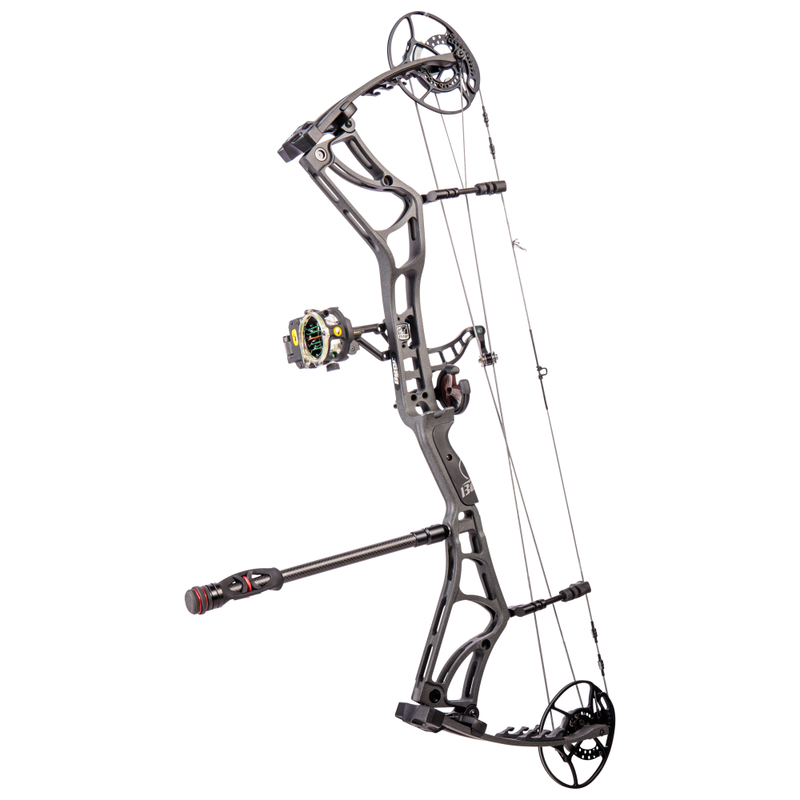Fine-Tune Your Objective: The Science Behind Compound Bow Stabilizers
Fine-Tune Your Objective: The Science Behind Compound Bow Stabilizers
Blog Article
Optimizing Your Archery Efficiency With the Right Substance Bow Stabilizer: a Thorough Review
One crucial yet often-overlooked part in improving accuracy is the compound bow stabilizer. By recognizing the nuances of choose and enhancing a substance bow stabilizer, archers can fine-tune their tools to elevate their capturing experience to brand-new levels of effectiveness and control.
Significance of Bow Stabilizers in Archery

Additionally, bow stabilizers help in stabilizing the weight distribution of the bow, which can improve the archer's security while shooting and intending. By including weight to the front of the bow, stabilizers can decrease the amount of torque experienced upon launch, resulting in a smoother and much more regulated shot - compound bow stabilizer. This weight distribution also assists in holding the bow steady for a longer period, enabling the archer to intend more accurately
Sorts Of Substance Bow Stabilizers
When thinking about the different kinds of substance bow stabilizers available, it is vital to recognize their distinct features and functions to identify one of the most ideal alternative for making best use of archery performance. The most common kinds of substance bow stabilizers consist of sidebar stabilizers, front stabilizers, and back stabilizers. Sidebar stabilizers affix to the sides of the riser and aid in stabilizing the bow during the aiming process. Front stabilizers, also known as long poles, are affixed to the front of the riser and help in soaking up and reducing any vibrations caused by the release of the arrowhead, hence boosting precision. Back stabilizers, likewise called rear stabilizers, are mounted to the back of the bow and assist in counterbalancing the weight of various other devices, causing boosted security and steady intending. In addition, some stabilizers feature flexible weights that permit archers to tweak the equilibrium and feel of their bows according to their preferences, making them functional alternatives for archery lovers of all degrees.
Factors to Take Into Consideration When Selecting
In evaluating compound bow stabilizers, understanding the distinct features and functions of each kind is essential for making an informed decision on the most suitable option to boost archery efficiency. When picking a stabilizer, one need to take into consideration the weight of the stabilizer itself. By meticulously examining these aspects, archers can choose a compound bow stabilizer that aligns with their shooting style and optimizes their general performance official website on the archery range.
Installation and Change Tips
For ideal efficiency and precision in archery, understanding the setup and adjustment of your bow stabilizer is necessary. Appropriate installment begins with affixing the stabilizer to the bow's riser, ensuring it is strongly secured.
When readjusting the stabilizer, start with tiny incremental modifications as opposed to extreme changes. This allows you to examine the impact of each adjustment accurately. Take note of just how the bow reacts to modifications in stabilizer setups and make adjustments as necessary. Remember that the goal is to locate a setup that reduces hand torque, lowers vibration, and improves precision. On a regular basis examine the stabilizer's tightness and general problem to guarantee it Go Here remains to work ideally. By mastering the setup and change process, you can maximize your archery performance and raise your capturing experience.
Upkeep and Care Standards

It is also essential to save your bow with the stabilizer in a risk-free and protected place when not in usage. Complying with these upkeep and care standards will help you obtain the most out of your bow stabilizer and enhance your address total archery performance.
Verdict
To conclude, choosing the ideal compound bow stabilizer is critical for making the most of archery efficiency. Understanding the relevance, types, variables to think about, installment and adjustment pointers, as well as upkeep and treatment guidelines can greatly influence one's accuracy and uniformity in capturing. By selecting a stabilizer that fits specific needs and choices, archers can boost their overall efficiency and attain better results on the array or in competition.
Bow stabilizers play a critical function in boosting an archer's accuracy and consistency by minimizing vibrations and maintaining the bow during the release of an arrowhead - compound bow stabilizer.In addition, bow stabilizers assist in balancing the weight distribution of the bow, which can boost the archer's security while shooting and intending. The most typical kinds of substance bow stabilizers include sidebar stabilizers, front stabilizers, and back stabilizers. Back stabilizers, also called rear stabilizers, are installed to the back of the bow and aid in counteracting the weight of other accessories, resulting in enhanced security and consistent aiming. When choosing a stabilizer, one should think about the weight of the stabilizer itself
Report this page